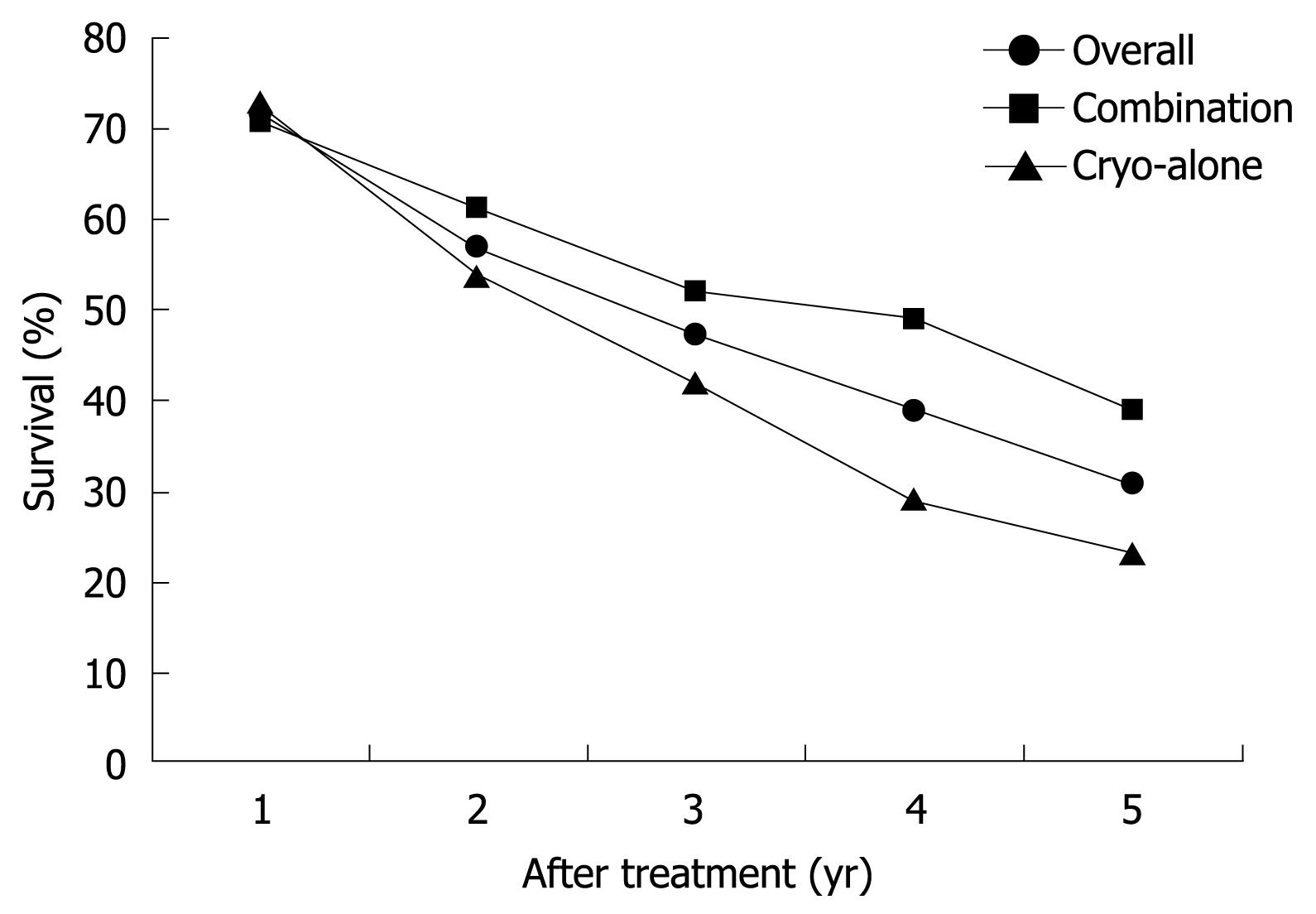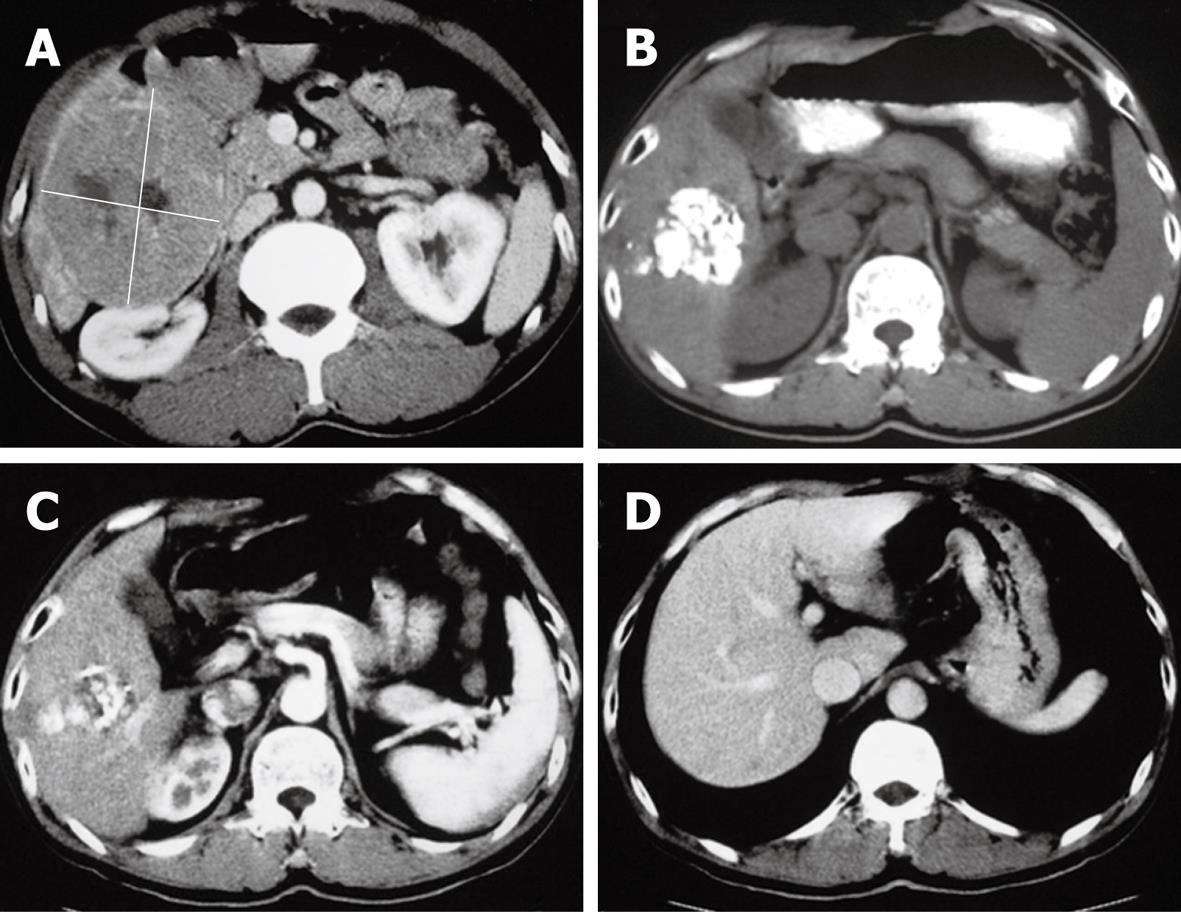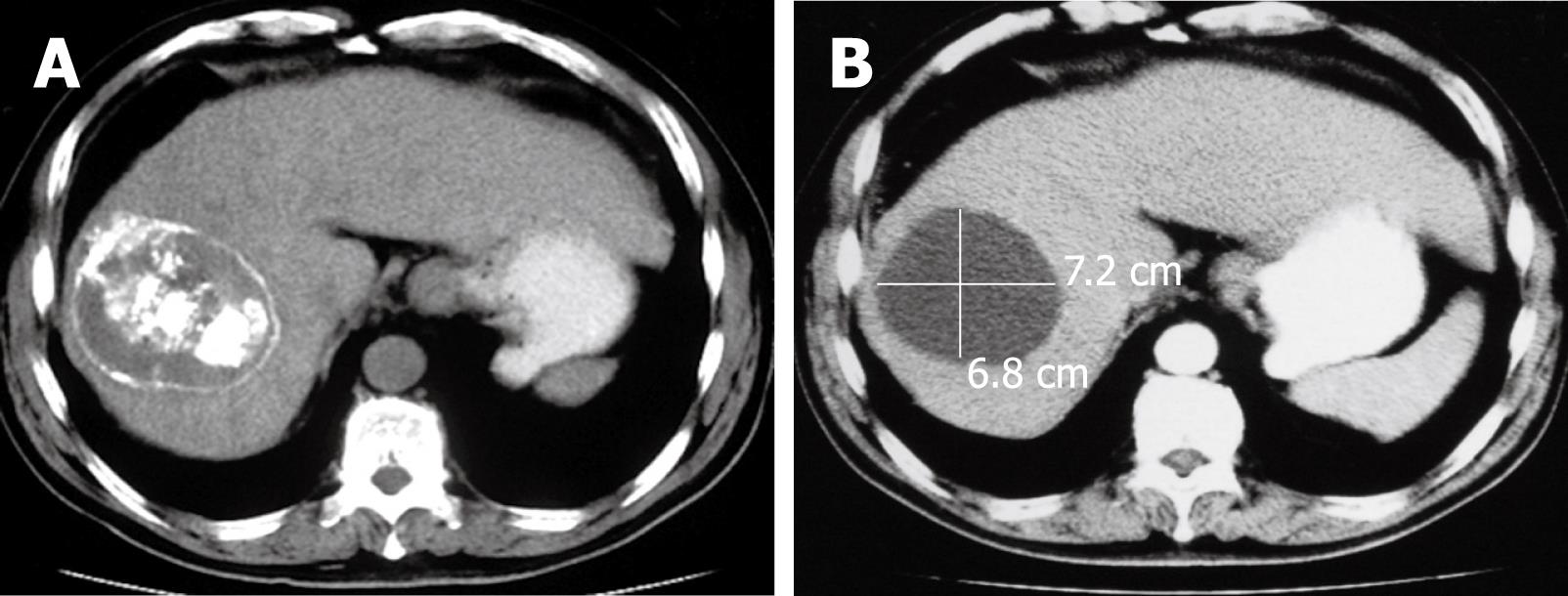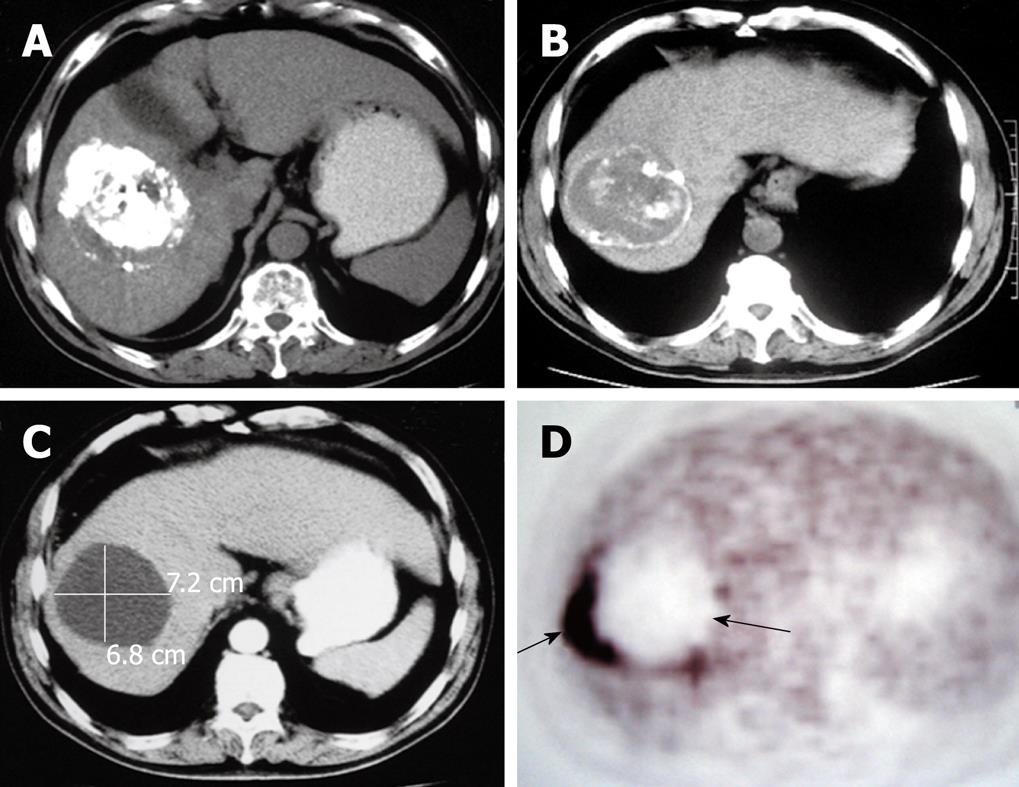Copyright
©2009 The WJG Press and Baishideng.
World J Gastroenterol. Aug 7, 2009; 15(29): 3664-3669
Published online Aug 7, 2009. doi: 10.3748/wjg.15.3664
Published online Aug 7, 2009. doi: 10.3748/wjg.15.3664
Figure 1 Survival rate of HCC patients.
Figure 2 Biopsy showing a HCC mass (11 cm × 9 cm) in the right liver lobe.
The sequential changes (A-D) of the mass were disappeared after sequential therapy.
Figure 3 Histology showing the HCC mass at 3 mo (A) and 28 mo (B) after sequential therapy.
The cryoablated mass had cavitation formation. No cancer cells were identified by needle aspiration.
Figure 4 A biopsy-proved HCC a female.
A: A space-occupying lesion in right lobe of the liver after TACE and prior to the cryosurgery; B: The cryoablated lesion at 3 mo and 3 years, respectively, after cryosurgery; C: Needle aspiration showing liquefaction of the cryoablated lesion and no cancer cells; D: PET-CT showing no metabolic activity in the cryoablated mass 5 years after therapy.
- Citation: Xu KC, Niu LZ, Zhou Q, Hu YZ, Guo DH, Liu ZP, Lan B, Mu F, Li YF, Zuo JS. Sequential use of transarterial chemoembolization and percutaneous cryosurgery for hepatocellular carcinoma. World J Gastroenterol 2009; 15(29): 3664-3669
- URL: https://www.wjgnet.com/1007-9327/full/v15/i29/3664.htm
- DOI: https://dx.doi.org/10.3748/wjg.15.3664












